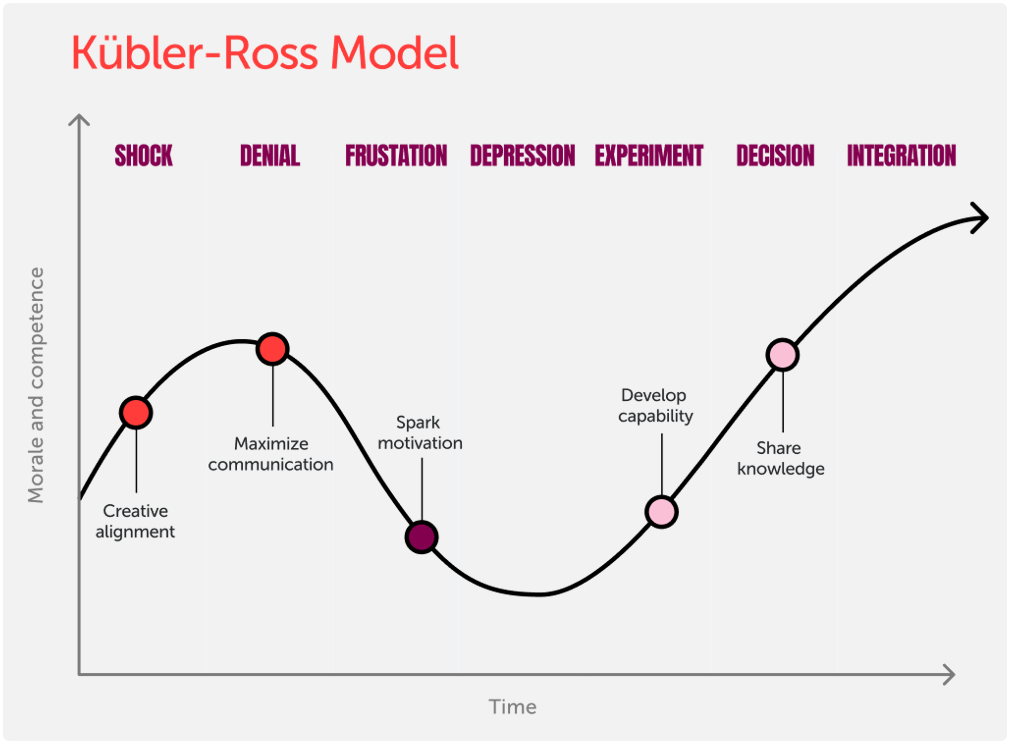In my many years of experience managing change—from the consultant side and from the corporate side—I’ve consistently heard that change management is “all about the
people.”
But let’s be real: Once put into practice, the systems, processes, and tools used in change management don’t always put people first. Communication can be tops-down, training is sometimes unapologetically sterile, and change assessments and personas look good on the surface, but it’s all typically a “one size fits all” approach.
So, techniques meant to help people adjust, adopt, and accelerate, are often missing a key element. What we need in addition to traditional change management techniques is change empathy. The practice and tools of change management create a solid structure, but that’s not enough to change hearts and minds. Empathy does that.
The best path to change empathy? Love. Listen. Lead.
Love: The foundation of change empathy
The single most important factor to empathetic change (and in fact, empathetic leadership) is love. We know the importance of loving and understanding people, which is why our “Spread contagious love” core value is integral to everything we do at Bonfire Effect.
Author and business consultant Marcus Buckingham defines love as: “The deep and unwavering commitment to the flourishing of a human.”
There’s a lot to unpack in that sentence, but at the heart of it, isn’t that what change empathy should be all about? We should be committed to not just fostering the adoption of change, but helping our employees flourish through the change we are enacting.
So, how do we design love into our change strategies? Employees feel authentic love when they know they are cared for—when leaders seek to understand where each employee is in the change journey, what they are feeling, dealing with, fearful of, and then can best guide them to the next phase of the curve.

The change journey is a multi-layered approach. Employees have tasks that need to get done, from training and system/tool/process adoption to productivity metrics. But each person is also experiencing their own curve to adopting the change. Change empathy balances the two in a very individual and intentional manner.
At the end, if we’ve loved and empathized with them through the change management process, they are flourishing. They’ve embraced the change and are using it to fuel their passion and productivity. Our employees are living their purpose at work—and they’re inspired to encourage others to do the same.
Listen—and learn
One of the biggest ways to show love is to listen. This isn’t a new concept. We’ve all read blogs and heard keynote speeches on active and purposeful listening. I will, however, remind you to actually do it. You might be a busy executive with very little time to meet with people individually or in small focus groups to dig deep and hear what they have to say.
But can you afford not to?
Active listening helps you, and it helps them; it helps you help them.
Listening isn’t only restricted to what they feel about the company and/or the change. It also gives the opportunity for people to indicate where they are on the change curve and what they need in order to move forward. They might even share ideas on how to make the change even better—if you listen.
Your employees believe in the company and want to see it succeed. They are invested in helping you do change right. And if they’re part of the solution, adoption and flourishing comes quicker for their peers.
Lead to successful change adoption
You’ve loved, you’ve listened, and now it’s time to lead. But successful change management is not “top down.”
You now deeply understand people’s personal and professional concerns, and you can overcome resistance early with targeted strategies. You can enact processes and resources to help them along the way, like extended training, counseling, or flexible working arrangements.
By loving and listening, you can now capitalize on those employees that are further along the change curve. This makes them early adopters—or “change catalysts”—and these people will help you tailor the storytelling that underpins all your people-centered communications that meet people where they are and help them move forward.
By leading in an empathetic way, you involve individuals at every level of your organization in the decision-making process. This not only helps them feel appreciated, but also strengthens strategies because decisions were made that represented their peers’ unique needs.
Change empathy
By loving, you genuinely care. By listening, you show it. By leading, you act on it.
Change empathy means creating a supportive and inclusive working environment where each employee feels valued, respected, heard through the entire change process. Strategies are designed in a truly people-first way—resulting in stronger employee engagement, heightened loyalty, flourishing, and trust.
And trust is critical to any successful change initiative.
Facing an organizational change? Take our change assessment to see how prepared you are to tackle it.
Our experts will help you love, listen, and lead your way to successful change management. Schedule a free chat with our team today.
